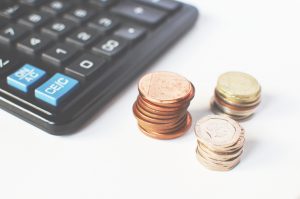Loss Aversion…
 It is a human tendency to avoid a loss as much as possible. A loss of Rs. 1000 gives much more pain than the amount of joy derived after gaining Rs.1000. Humans have a bias against loss and this has been proved in many behavioral studies. Loss aversion must be inbuilt in humans as in ancient times, being careless in hunting or an injury or getting excluded from the group could lead a human to die as the world was harsh. Therefore people who were cautious survived and investors today are their descendants. So evolution has made them such that they fear loss more than they like to gain.
It is a human tendency to avoid a loss as much as possible. A loss of Rs. 1000 gives much more pain than the amount of joy derived after gaining Rs.1000. Humans have a bias against loss and this has been proved in many behavioral studies. Loss aversion must be inbuilt in humans as in ancient times, being careless in hunting or an injury or getting excluded from the group could lead a human to die as the world was harsh. Therefore people who were cautious survived and investors today are their descendants. So evolution has made them such that they fear loss more than they like to gain.
Few day-to-day examples – People are hesitant to sell a favorite old car or a piano even if it is not of much use to them now. If they are forced to sell it, they ask for a high price as they feel they are giving away something valuable and cannot bear to see it go.
Doesn’t everyone get tempted by offers such as ‘Buy 2, Get 1 Free’ even though they might not need three! People want to take up the offer as they do not want to lose the one that is given free. Everyone is apprehensive about taking up a new role in the company that they work in or changing a job as they are in a comfortable place and do not want to risk it. Caution is good but being so cautious that investors don’t take up any risks or challenges will not help them achieve their goals or ambitions.
How does Loss Aversion affect personal finance?
- Many investors do not sell loss-making investments hoping against hope that someday they might be profitable. This delay leads to further loss due to the erosion of the capital value.
- On the other hand, investors tend to sell off stocks whose prices are rising. investors feel that if they do not sell them, prices might fall and they will end up making losses.
- Many investors stay away from falling markets as they cannot digest losses. When the markets come back to their true valuations, high-quality stocks & Mutual Funds would bounce back. People would have lost the chance to buy attractive stocks at low prices.
- People invest maximum amount in safe, low-interest investment products that provide no great returns nor are able to beat inflation.
Source: www.tflguide.com by Hemant Beniwal
Asset Multiplier Comments:
- Holding on to loss-making investments hoping that they will turn around or averaging an investment with shaky fundamentals is a definitive way that results in capital erosion.
- Even the most seasoned investors demonstrate loss-averse behavior, the only way to avoid the trap is to cut our losses as early as possible and ensure our capital is preserved.
Disclaimer: “The views expressed are for information purposes only. The information provided herein should not be considered as investment advice or research recommendation. The users should rely on their own research and analysis and should consult their own investment advisors to determine the merit, risks, and suitability of the information provided.”
